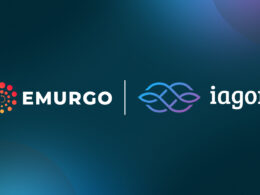Many academic communities were initially slow to understand the numerous potential implications of blockchain technology. The evolution of developments has shown that we are at the beginning of this innovation, and there is still a long way to go.
This technology has global significance, with commercial, economic, social, legal, and philosophical impact on society. To this day, blockchain research studies largely lack a bridge between these academic disciplines for a broad approach.
There is a parallel in the evolution between blockchain technology and the internet. The World Wide Web led to the emergence of new transaction and communication patterns, with changes that have had a substantial effect on humanity.
The first research on the Internet focused mainly on technical issues, necessary to establish a reliable and scalable data transfer in the form of bits, and then, once this obstacle was resolved, the technology was adopted in both our professional and private lives, and numerous academic communities They began to investigate its impact from different points of view.
See the order of evolution of the Internet as a disruptive technology, first was the technical issue for its viability, then its adoption, and finally its multidisciplinary scientific research, to grow to its new stage, with its technological improvement of application.
In recent years, the evolution of the blockchain has mimicked the history of the Internet.
The Bitcoin initial document was published in 2008, followed by implementation in 2009. From then on, it took several years before the technology gained widespread public recognition.
The debate around Bitcoin and blockchain was soon dominated by discussions about applications that could offer a wide variety of use cases with desirable objectives, such as food security, better working conditions, financial inclusion, better healthcare and direct democracy, but also included the possibility of nefarious uses such as money laundering and drug trafficking.
Blockchain is not an exclusively technological nor only an economic phenomenon, but also a philosophical, social, legal and business phenomenon. It is relevant to all of these areas simultaneously, and probably many more.
Blockchains Versus DLT
Blockchains are a type of Distributed Ledger Technology (DLT). Their peculiarity is that the information stored in them is connected through blocks protected with cryptography. A block contains a hash code that works as its “fingerprint”, stored in the blocks, so that they are recorded in an indisputable and orderly manner over time, and it would only be possible to change a block in the chain if the entire chain is altered. of consecutive blocks, which would require a lot of computing power.
The main premise of blockchain is simple: rather than relying on a trusted intermediary to exclusively maintain a ledger of transactions between members of a network, all members maintain their own copies of the same ledger, ensuring that all The copies are synchronized, decentralizing the provision of data. This synchronization avoids the asymmetry of information that an intermediary has, which could act in an interesting and extractive, inefficient or corrupt manner.
There are three types of blockchain, which differ according to the participants’ ability to read, write and verify transactions.
Permissionless public blockchains are those that allow all users to read, write and verify transactions such as Bitcoin, launched in 2009, Monero in 2014, Ethereum in 2015, or Cardano in 2017, are examples.
In private permissioned blockchains, only authorized users can read, write, and verify transactions; IBM Food Trust, and WeTrade (all released since 2018) are examples.
Between these two types of blockchains are public permissioned networks, in which all participants can view the stored data, but only authorized nodes can validate transactions, such as Ripple, released in 2012.
It is worth mentioning that the underlying structure of distributed ledgers does not necessarily have to be in the form of a chain. Alternative approaches to blockchain technology propose Directed Acyclic Graphs (DAGs), a system that interweaves the flow of individual transactions. The structure of a DAG resembles a flowchart where all points are directed in one direction. In fact, a DAG can branch into other DAGs, which are part of the main DAG and maintain this same property. This capability allows the structure to be simplified and adds parallelism. Its main advantage lies in the faster processing of transactions, unlike blockchains that are linear.
The Economic Scalability of Blockchain
The Theory of Disruptive Innovation (Christensen, 1997) says that established companies will likely pursue sustainable innovations rather than disruptive innovations. Sustained innovations improve current products and services for an incumbent’s most demanding and profitable customers, and so existing companies are unlikely to cannibalize their revenue to adopt a disruptive innovation.
So, according to the Theory of Disruptive Innovation, it suggests that many blockchain innovations will likely come from agile startups because they have no legacy barriers, although as in the context of blockchain technologies they are applications shared between companies, with no company controlling the application, a completely new theory of ecosystem innovations may even be required, in which innovations occur at the ecosystem level rather than at the firm level, involving partners, customers, suppliers and competitors.
As an ecosystem, any blockchain application released into production faces the daunting challenge of attracting additional users. The law of Metcalfe establishes that the value of a network is proportional to the square of the number of users connected to the system. The question arises as to how the founders of an innovation could attract more adopters.
Interoperability is fundamental to the entire value proposition of blockchain technology. Users must be able at any time to transfer value (tokenized or not) from one blockchain system to another, with speed, trust and accountability. In fact, a key lesson from three decades of Internet development is that interoperability is key to survival.
From the beginning, with Bitcoin, blockchains were originally conceived to have a transformative impact on the economy and finance, seeking to give greater power and financial sovereignty to people: the peer-to-peer concept.
The transformation of capital markets will inevitably affect its main stakeholders, in particular banks, who, among other functions, act as intermediaries between investors and borrowers, to provide liquidity and create money through the granting of loans. It is especially this last function of banks that has raised questions about the sustainability of the current model of the financial system, and that is where cryptocurrencies play a competitive role.
In terms of its impact on the banking sector, blockchain can be seen as simply an enhancing technology, or as a governance mechanism. According to the disruptive view, some banks will adapt and benefit, while others will be left behind and fail.
The Legal Framework Will Evolve Due to Market Demand: Lex Cryptographica
During medieval times, internal trade was regulated by customary laws specific to a kingdom. Advances in transportation infrastructure expanded the scope of trade beyond a single kingdom and thus arose the “Lex Mercatoria” (the law of merchants), organically from the interactions of merchants who sought to expand the scope and reduce the uncertainty of commerce. No sovereign authority or kingdom enforced it, so merchants developed their own courts to enforce their own legal frameworks rooted in practical needs. Commercial courts progressively emerged along the main trade routes, recognizing the Lex Mercatoria as a universal set of rules applicable to everyone, regardless of their geographical location.
With the arrival of the Internet and digital technology, an alternative regulatory system called Lex Informática emerged, by analogy with Lex Mercatoria, as an ideal set of tools for the regulation of online transactions, used as a complement to contractual rules. Like “Lex Mercatoria”, “Lex Informática” is ultimately based on self-regulation: it is a system of customary rules and technical standards, developed by those who interact on the global Internet network.
Blockchain technology is enabling the emergence of another regulatory system, a new coordination mechanism that also relies on technical means (blockchain protocols and technologies such as so-called “smart contracts”) to coordinate behavior. The benefit of this new regulatory system, sometimes called “Lex Cryptographica”. For such a system to achieve widespread adoption, it is crucial to identify new dispute resolution mechanisms capable of satisfying the basic requirements of transparency, accountability, accessibility, equity and due process.
For example, the TheDAO hack, in which an anonymous hacker exploited a vulnerability in the code of a smart contract to withdraw Ether, is an interesting example of how the Ethereum community had to come up with a solution on how to solve an issue related to contracts, relying solely and exclusively on internal coordination and community governance mechanisms.
Final Words
Technological innovations are accepted by society only if they solve a problem, are easy to use, have a quick learning curve, and are economically viable. But they must also establish their own value network, between suppliers and users who mutually benefit.
In short, technology is adopted, en masse, only if it adds value.
Currently, the demand is positioned more than anything in speculative terms, due to the volatility of the price of cryptocurrencies and their short-term economic incentive, but blockchain developments are showing a path of usefulness in a variety of applications, which satisfies the demand of people, but also institutions.
The challenge for the crypto space community is to achieve adoption without losing the blockchain essence: peer-to-peer decentralization.










